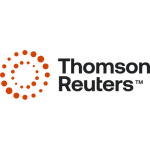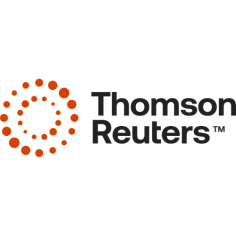The AI Adoption Reality Check: Firms with AI Strategies are twice as likely to see AI-driven revenue growth by Thomson Reuters
NEW Thomson Reuters survey data reveals that only a quarter of organizations have a visible AI strategy. Time savings from AI could see a $32 billion opportunity on the table for the legal and tax industries in the U.S. alone
Thomson Reuters, a global content and technology company, today released its 2025 Future of Professionals report, which reveals a significant divide between organizations* that have adopted an AI strategy and those that have not. The report, based on input from 2,275 global professionals across legal, risk, compliance, tax, accounting, audit and global trade, shows that organizations with visible AI strategies are twice as likely as those with more informal or ad hoc adoption approaches to experience revenue growth as a direct or indirect result of AI adoption, and 3.5 times more likely to experience critical AI benefits, compared to those with no significant AI adoption plans at all. However, despite the clear benefits, only 22% state their businesses have a visible, defined AI strategy, meaning many organizations may be missing out on the advantages of strategically integrating AI. Without a coherent plan that aligns AI initiatives with organizational priorities, these businesses risk falling behind in achieving meaningful returns and competitive growth.
Globally, survey respondents across industries also predict that professionals using AI will save 5 hours weekly within the next year, up from 4 hours predicted in 2024, unlocking an average of $19,000 in annual value per person, according to our study’s overall findings. In the U.S. alone, this AI-driven efficiency could translate to a $32B combined annual impact for the legal & CPA sectors.
“Professional work is now being shaped by AI, and those who fail to adapt risk being left behind,” said Steve Hasker, President and CEO of Thomson Reuters. “Our research shows that organizations with AI strategies are seeing significant returns on investment, while those without are struggling to keep pace. The $32 billion value opportunity in the U.S. is a wake-up call for organizations to prioritize strategic AI adoption and investment. By developing a strategy to drive both AI adoption and redeploy the productivity gains we expect to unlock, organizations will achieve sustained innovation, greater operational excellence, and revenue growth—while empowering professionals not just to be more productive, but to remain relevant.”
The report highlights three key themes: Bridging the gap between tech today and business tomorrow; the jagged edge of AI adoption; and the modern professional. Key findings include:
Bridging the gap: 80% of professionals believe AI will have a high or transformational impact on their profession over the next 5 years, but only 38% expect significant change at their own organization this year. More than half (53%) of professionals said their organizations are already seeing ROI as a direct or indirect result of their AI adoption, with improved efficiency and productivity being the most common benefits.
The jagged edge: 3 in 10 professionals say their organizations are moving too slowly on AI adoption, and 4 in 10 organizations are adopting AI without a strategy. The report reveals a significant disparity in AI adoption, with some organizations experiencing significant benefits while others struggle to implement AI effectively.
The modern professional: 55% of professionals have experienced significant changes in their work in the past year, or expect to in the coming year, and 46% report skills gaps on their teams, mainly in technology and data competencies. 88% of professionals favor having profession-specific AI assistants, highlighting the growing importance of AI in professional work.
To access the full report, visit https://www.thomsonreuters.com/en/c/future-of-professionals.
Methodology:
Research was conducted in February and March 2025 via an online survey of 2,275 professionals across the globe from the legal, tax, trade, accounting, and risk & compliance fields, among others, employed by corporations, firms, and government agencies. Geographies included in the survey include North America, Latin America, the UK, Europe and APAC.
*In this report, organization is the generic term used to describe: i) firms, for those in private practice; ii) corporations, for corporate C-Suite; and iii) in-house departments, for corporate and government professionals



